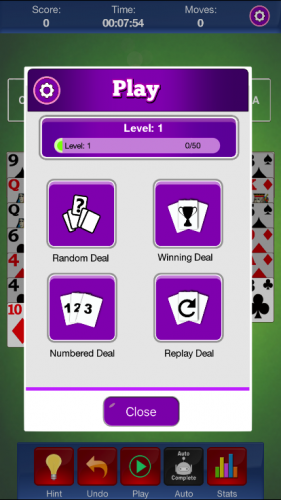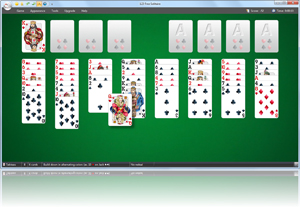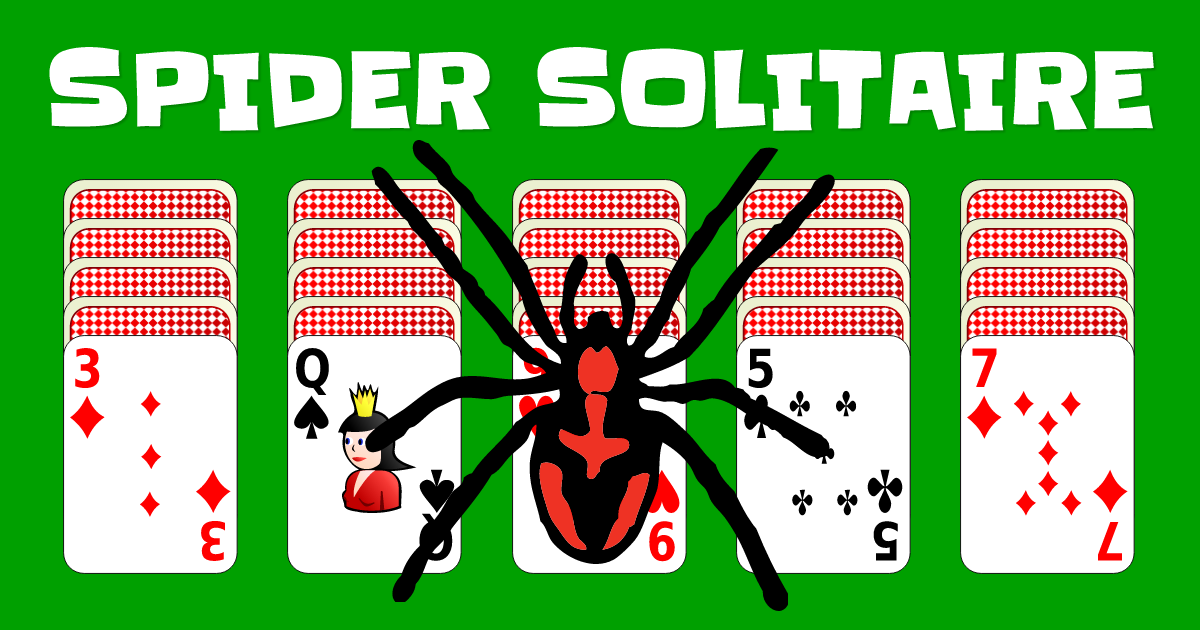- Unlike many versions of solitaire, nearly 100% of all freecell games can be won. And many players prefer to win a game entirely by their own wits, rather than relying on chance. Freecell is players with 52 cards and, just like Klondike Solitaire, build stacks in descending order and opposite color.
- 123 Free Solitaire. Play a 100% free beautiful collection of FreeCell solitaire game variations: FreeCell, FreeCell Two Decks, Baker's.
- Use the open cells to remove the cards from the game for a time to make that freecell movement easier on the board. Move the cards into the foundations by suit, ace to king to win! Three Freecell is an interesting game, because even with the reduction in one open cell, each game still has over a ninety nine percent chance of solvability.
- 247 Freecell offers many freecell games for every type of freecell lover. Classic Freecell is over 99% solvable, making your moves always count! Place all the cards from the deck into the home slots to win Freecell! Freecell is a game to be enjoyed by all ages.
The definitive FreeCell app is here! Introducing King Solitaire - FreeCell! FreeCell, that game we all know and love from our PCs, is now available for your smartphone or tablet! This marks our fourth solitaire app, and we've poured a whopping 4 years of experience into bringing you a true digital masterpiece! - You'll find the smooth, responsive control of the smash hit Solitaire Victory here!
 FreeCell is a solitaire game that was made popular by Microsoft in the 1990s. One of its oldest ancestors is Eight Off. In the June 1968 edition of Scientific American Martin Gardner described in his 'Mathematical Games' column, a game by C. L. Baker that is similar to FreeCell, except that cards on the tableau are built by suit instead of by alternate colors. This variant is now called Baker's Game.
FreeCell is a solitaire game that was made popular by Microsoft in the 1990s. One of its oldest ancestors is Eight Off. In the June 1968 edition of Scientific American Martin Gardner described in his 'Mathematical Games' column, a game by C. L. Baker that is similar to FreeCell, except that cards on the tableau are built by suit instead of by alternate colors. This variant is now called Baker's Game. Paul Alfille changed Baker's Game by making cards build according to alternate colors, thus creating FreeCell. He implemented the first computerized version of it for the PLATO educational computer system in 1978. The game became popular mainly due to Jim Horne, who learned the game from the PLATO system and implemented the game as a full graphical version for Windows. This was eventually bundled along with several releases of Windows.
- Shuffle, then deal the 52 cards face up in 8 columns with each card visible but only the end card of each column fully exposed. Four columns will have 7 cards, the others only 6.
- Apart from the columns, there are four single card free cells and four suit piles (foundations). The objective is to get all the cards into the foundations.
- Single exposed cards may be moved:
- Column to column, placing the card on a card of the next rank and different colour suit. (E.G. Place a red 3 on a black 4.) (Aces are low.). Empty columns may be filled with any suit or rank.
- Column to FreeCell, any exposed card as long as there is an empty cell.
- FreeCell to Column, as column to column.
- Column to suit home pile. Next card in order, starting with the Ace, ending with the King. Each suit is completely independent.
- FreeCell to suit home pile. As column to suit home pile.
FreeCell Rules
The different piles
There are three different types of piles in FreeCell Solitaire. They are:
- The Free Cells: The four piles in the upper left corner.
- The Foundations: The four piles in the upper right corner.
- The Tableau: The eight piles that make up the main table.
The setup
The Tableau piles are numbered from 1 to 8, piles 1-4 start with 7 cards each, piles 5-8 with 6 cards each. The Foundations and Free Cells are empty.

The objective
To win FreeCell, you must get all the cards onto the Foundations. The Foundations are ordered by suit and rank, each Foundation has one suit and you must put the cards onto them in the order Ace 2 3 4 5 6 7 8 9 10 Jack Queen King. To do that you can use the moves described below:

Freecell 123 247 Sudoku Easy 247
Allowed moves

Freecell 123

- Move one or more cards from one Tableau pile to another. You can move the top card of a pile on the Tableau onto another Tableau pile, if that pile's top card is one higher than the moved card and in a different color. For example, you could move a red 6 onto a black 7. If the top cards on a Tableau pile are ordered, e.g. you have red 6, black 5, red 4 as the top cards, then you can click the red 6 and move all of them together onto another Tableau pile that has a black 7 as its top card. HOWEVER, there is a limitation to how many ordered cards you can move together. The number of cards you can move together is basically the number of empty free cells and empty tableaus + 1. So, if you have 2 free cells empty you can move 3 cards together. If you have all 4 free cells empty you can move 5 cards. If you have 3 free cells and 4 empty tableaus you can move 8 cards together. Moving many cards together is basically just a convenience the game provides. In the strictest sense you should always move one at a time, but if you have 4 ordered cards and 3 free cells then you could trivially move the top 3 ordered cards to the free cells, then move the fourth card and then move the 3 cards from the free cells back onto the fourth card. So, for convenience the game allows you to move n+1 cards together, where n is the number of free cells.
If you have an empty Tableau pile then you can move any card there. - Move a single card onto a Free Cell. You can always move the top card of any Tableau Pile, Free Cell or Foundation onto a Free Cell if it's empty. Free Cell's can only hold a single card at a time.
- Move a card from a Free Cell. You can move a card from a Free Cell onto a Foundation if it's in the same suit and one higher than the Foundation's top card. Or you can move a card from a Free Cell onto a Tableau pile if the card is one lower and in a different color than the Tableau pile's top card. E.g. you could move a red 5 from a Free Cell onto a Tableau pile where the current top card was a black 6.
- You can move a Tableau card onto the Foundations. You can either drag the cards onto the Foundation, or just double click it and then it will go there by itself. When the Free Cells are empty and all cards on the Tableau are arranged in 4 piles and each of the piles has been ordered in descending order with alternating red/black cards then the Tableau will clear itself, since at that point you are guaranteed to win the game.
- You can Undo as many times as you like. The game offers unlimited undos. Each Undo counts as a new move though, so if you're trying to win the game in as few moves as possible you should be careful about how many undos you use.
Time and Moves
The game counts the moves you make, and measures the time it takes to finish the game, so you can compete against your previous best games if you want. Currently this data is not stored anywhere, in the future I might add some kind of high scores.
About FreeCell
Hi. My name is Einar Egilsson and I made this online verson of FreeCell. FreeCell is the second solitaire game I create, before that I created Klondike (or 'classic' solitaire) and I've also made a few card games like Hearts, Spades and Whist.
If you have any questions, comments or requests for other solitaire games you can send them to admin@cardgames.io or tweet at me @cardgames_io. If you have any errors or problems when playing the game please include which browser you're using when you email me, it makes figuring out the problem a lot easier :)
Many thanks go to Nicu Buculei, who created the excellent playing card images that I use for the game.
If you like this game check out my various other games, and please share them on Facebook/Twitter/Google+
This is version 2887 of FreeCell.
This website uses cookies to store your preferences, and for advertising purposes. Read more in our Privacy Policy or manage your privacy settings.